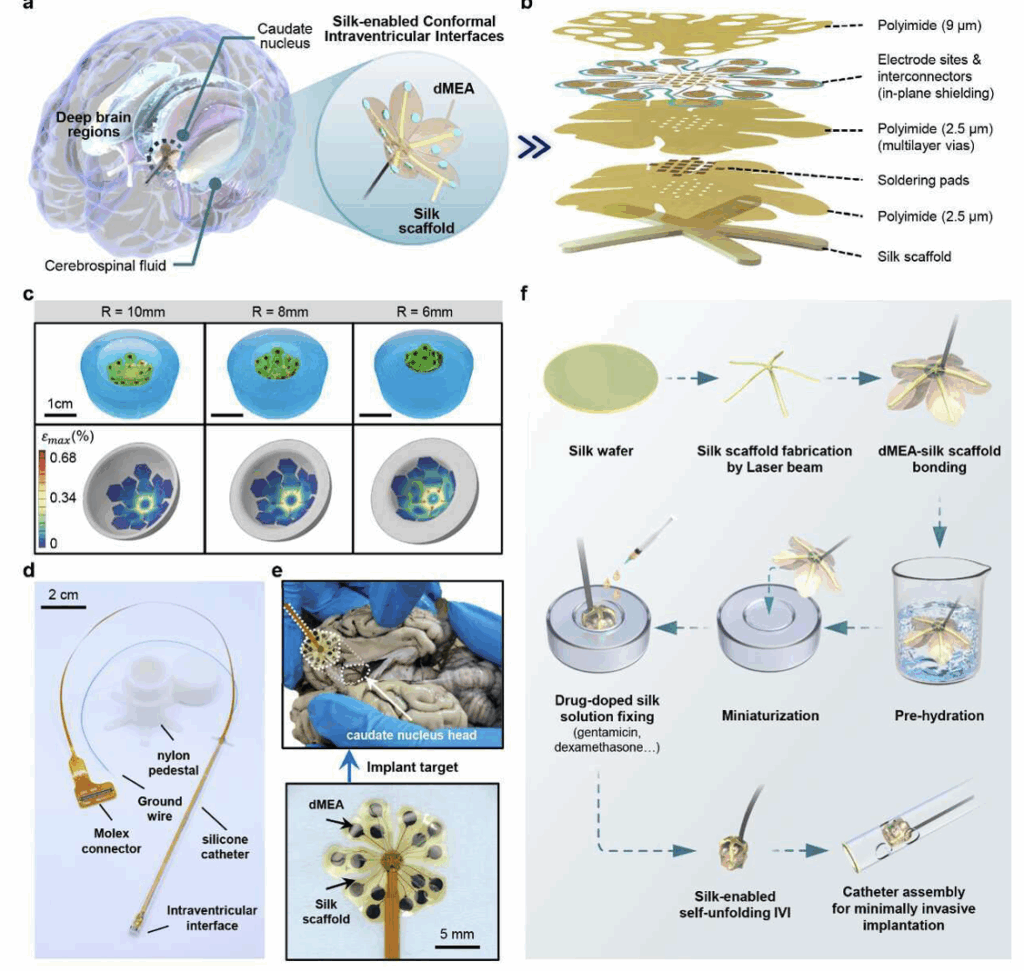https://www.cas.cn/syky/202510/t20251030_5086645.shtml
https://www.nature.com/articles/s41467-025-64397-9
A research team from the CAS Shanghai Institute of Microsystem and Information Technology has developed a minimally invasive implantable flexible neural interface for the ventricles powered by silk protein. This flexible neural interface can self-deploy in the cerebrospinal fluid environment, conformally attaching to the inner surfaces of the brain, including deep nuclei and ventricles, and can be used for long-term in vivo monitoring, providing a new technical means for the analysis of neurological diseases related to deep nuclei.
Once inside the lateral ventricle, the shape-memory function of the silk scaffold allows for self-deployment and conformal attachment. Simultaneously, coplanar metal shielding is introduced into the electrode routing layer to suppress power frequency noise interference, ensuring signal quality in complex surgical environments and long-term follow-up.
The team did in vivo validation in Parkinson’s disease sheep during intraoperative and free-movement states. The neural interface achieved stable recording on the surface of the caudate nucleus head in sheep, capturing Parkinson’s disease-related β oscillations and responses to levodopa intervention. It maintained good electrical performance and tissue compatibility during a four-week chronic recording period, demonstrating minimally invasive, long-term, and wide-coverage neural circuit monitoring capabilities for deep brain and ventricular pathways.

